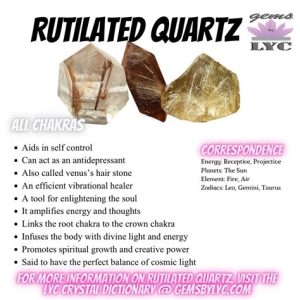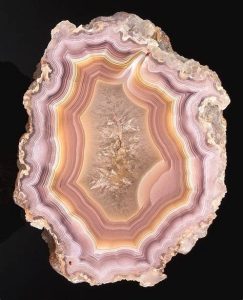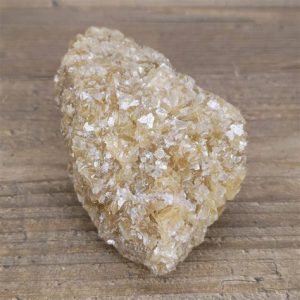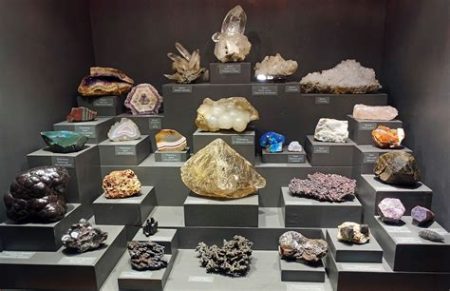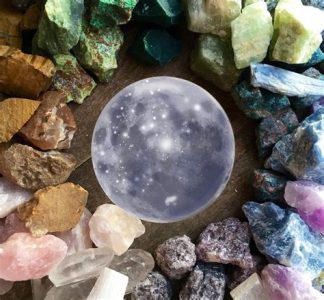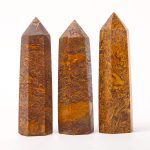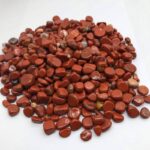Gray stones, with their enigmatic charm and enduring resilience, have been captivating builders, artists, and historians for centuries. From ancient monuments to contemporary architectural masterpieces, gray stones have left an indelible mark on the world’s landscape. This comprehensive guide delves into the multifaceted nature of gray stones, exploring their geological origins, practical applications, historical significance, and aesthetic allure.

Geological Formation of Gray Stones
Gray stones are primarily composed of igneous, sedimentary, or metamorphic rocks.
- Igneous Rocks: Formed from the cooling and solidification of molten magma, igneous rocks exhibit a crystalline structure. Abundant minerals like feldspar, quartz, and mica impart a gray hue to rocks such as granite, diorite, and gabbro.
- Sedimentary Rocks: Composed of compacted and cemented sediments, sedimentary rocks often contain fossils and organic matter. Sandstone and limestone are common examples of gray sedimentary rocks.
- Metamorphic Rocks: Resulting from the transformation of existing rocks under intense heat and pressure, metamorphic rocks exhibit a distinct layered or foliated texture. Gneiss and slate are widely used gray metamorphic rocks.
Practical Applications of Gray Stones
Gray stones have long been employed in construction and infrastructure due to their durability and aesthetic appeal.
- Building Materials: Gray stones have adorned countless iconic structures, including castles, cathedrals, and skyscrapers. Their strength and resistance to weathering make them ideal for exterior walls, foundations, and paved surfaces.
- Landscaping: Gray stones enhance outdoor spaces as walkways, patios, and rock gardens. Their neutral color complements diverse plant life and creates a sense of tranquility.
- Sculptures: Sculptors have used gray stones for centuries to craft exquisite works of art. The material’s relative softness allows for intricate detailing, while its durability ensures longevity.
- Industrial Applications: Gray stones are employed in industries such as abrasives, refractories, and construction aggregates. Their abrasive properties have been utilized in grinding and polishing, while their heat resistance makes them valuable in high-temperature applications.
Historical Significance of Gray Stones
Gray stones have played a pivotal role in human history:
- Ancient Monuments: From the Great Wall of China to Stonehenge, gray stones have been used in the construction of ancient monuments that have stood the test of time.
- Religious Structures: Temples, churches, and mosques around the world feature gray stones as architectural elements, adding a sense of grandeur and permanence.
- Historical Buildings: Castles and palaces built in centuries past demonstrate the enduring beauty and resilience of gray stones.
- Archeological Artifacts: Gray stones have been used to create tools, weapons, and artwork, providing valuable insights into ancient civilizations.
Aesthetic Charm of Gray Stones
Gray stones possess a timeless elegance that has captivated artists and designers:
- Neutral Hue: The neutral gray hue of these stones complements any color scheme, making them versatile for both interior and exterior applications.
- Texture and Patterns: Gray stones exhibit a wide range of textures and patterns, from smooth and polished to rough and rustic. This diversity adds visual interest to architectural and landscaping projects.
- Timeless Appeal: Gray stones have a timeless aesthetic that transcends trends. Their understated beauty and durability make them a popular choice for both traditional and modern designs.
- Emotional Impact: Gray stones have a calming and contemplative effect, creating a sense of serenity and well-being.
Creative Applications of Gray Stones
Beyond their traditional uses, gray stones can inspire innovative applications:
- Stone Veneer: Thin sheets of gray stone can be applied to walls, fireplaces, and furniture to create a natural stone look at a fraction of the cost of solid stone installations.
- Stone Countertops: Gray stone countertops offer a durable and stylish surface for kitchens and bathrooms. Their neutral color complements both modern and rustic designs.
- Stone Mosaic: Gray stone tiles in various sizes and shapes can be used to create eye-catching mosaics for walls, floors, and tabletops.
- Stone Pavements: Gray stone pavers add character to walkways, patios, and driveways. Their interlocking design ensures stability and reduces maintenance.
- Geoengineering: Gray stones have been proposed as a potential material for carbon sequestration, where they can be injected into the ground to store carbon dioxide and mitigate climate change.
Common Mistakes to Avoid when Using Gray Stones
To maximize the benefits and minimize potential issues with gray stones, it’s essential to avoid the following common mistakes:
- Improper Sealing: Failure to seal gray stones can lead to staining, discoloration, and premature deterioration. Apply a penetrating sealer to protect the stone’s surface.
- Excessive Cleaning: Avoid using harsh chemicals or excessive scrubbing on gray stones, as this can damage the finish.
- Improper Grouting: When installing gray stone tiles, use a grout that matches the stone’s color and texture to prevent unsightly gaps.
- Uneven Load Distribution: Ensure that heavy objects or structures placed on gray stones are evenly distributed to avoid cracks or breakage.
- Ignoring Weather Conditions: Consider the climate and weather conditions in your area when selecting gray stones. Stones with high porosity may require additional protection in harsh conditions.
Step-by-Step Approach to Gray Stone Installation
For successful installation of gray stones, follow these steps:
- Preparation: Plan the layout, gather necessary tools and materials, and prepare the surface by removing debris and leveling the area.
- Laying the Foundation: Create a base layer using a mixture of sand, gravel, and cement. Compact the base to ensure stability.
- Installing the Stones: Place the gray stones on the base layer, aligning and leveling them carefully. Tap the stones gently with a rubber mallet to secure them.
- Grouting and Sealing: Apply grout between the stones, filling the gaps. Once the grout has dried, apply a penetrating sealer to protect the surface.
- Maintenance: Sweep or wash the gray stone regularly to remove dirt and debris. Reapply sealer periodically to maintain its protective properties.
Frequently Asked Questions (FAQs) about Gray Stones
- Q: Are gray stones durable?
- A: Yes, gray stones are generally durable and can withstand various weather conditions. However, their durability varies depending on the specific type of stone.
- Q: How can I clean gray stones?
- A: Use a mild detergent and warm water. Avoid using harsh chemicals or excessive scrubbing. Rinse thoroughly after cleaning.
- Q: Can gray stones be used in bathrooms?
- A: Yes, gray stones can be used in bathrooms, but it’s important to seal them properly to prevent staining or water damage.
- Q: Are gray stones good for landscaping?
- A: Yes, gray stones are an excellent choice for landscaping projects. They add texture and visual interest to pathways, patios, and rock gardens.
- Q: How can I determine the quality of gray stones?
- A: Examine the stones for cracks, chips, or other imperfections. Ensure they are dense and have a uniform color and texture throughout.
- Q: Can I install gray stones myself?
- A: Yes, you can install gray stones yourself with the right tools and materials. However, it’s recommended to consult a professional for larger or more complex projects.
Tables and Charts
Table 1: Common Types of Gray Stones
| Type | Rock Formation | Characteristics |
|---|---|---|
| Granite | Igneous | Crystalline, durable, resistant to weathering |
| Diorite | Igneous | Darker than granite, less granular |
| Gabbro | Igneous | Darkest and most coarse-grained igneous gray stone |
| Sandstone | Sedimentary | Composed of sand grains, varying porosity and texture |
| Limestone | Sedimentary | Formed from marine organisms, soft and porous |
| Gneiss | Metamorphic | Banded or foliated texture, strong and durable |
| Slate | Metamorphic | Layered structure, easy to split into thin sheets |
Table 2: Physical Properties of Gray Stones
| Property | Measurement | Range |
|---|---|---|
| Density | kg/m³ | 2,600 – 2,900 |
| Porosity | % | 0.5 – 15 |
| Compressive Strength | MPa | 50 – 300 |
| Flexural Strength | MPa | 10 – 50 |
Table 3: Applications of Gray Stones
| Application | Example | Benefits |
|---|---|---|
| Building Exterior | Facades, walls | Durability, weather resistance, aesthetic appeal |
| Landscaping | Patios, walkways | Adds texture and character, enhances outdoor spaces |
| Sculpture | Statues, fountains | Allows intricate detailing, withstands weathering |
| Abrasives | Grinding wheels, polishing compounds | High durability and abrasive properties |
| Refractories | Furnace linings, kilns | Resists high temperatures and thermal shock |
Table 4: Maintenance of Gray Stones
| Maintenance Activity | Frequency | Benefits |
|---|---|---|
| Sweeping or Washing | Regularly | Removes dirt and debris, prevents stains |
| Reapplying Sealant | Every 1-3 years | Protects surface from moisture, stains, and weathering |
| Inspecting for Cracks or Damages | Annually | Identifies and repairs potential issues, ensures longevity |

